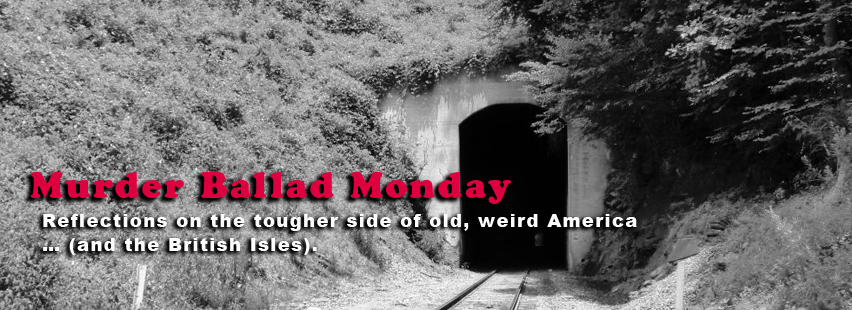“Old Bill Rolling Pin”
<<<Back to page 1
Mr. Frog got swallowed by a big black snake
Let’s follow it to its logical conclusion. Three other animals appear in this seemingly simple song. A frog, a black snake and, in the case of the printed version above, a duck. You’ll note that things don’t turn out too well for the frog and the duck. While we don’t limit ourselves to considering murder ballads only in this blog, that snake definitely puts this song back in our wheelhouse!
The 1989 anthology Talk That Talk includes a commentary by Marian E. Barnes about Frankie and Doug Quimby, two of the venerable Georgia Sea Island Singers. Bessie Jones, of course, had earlier been a member of the choral group. The Quimbys still performed this song that Bessie’s grandfather passed on to her. According to Barnes, Frankie Quimby explained to audiences that the frog was the slave and the big black snake was the patteroller. The whip-like snake ‘eats’ the frog, as the white patrols gathered in runaways. The snake’s color supposedly was reverse psychology; part of the code to throw off white folks.
That reading is certainly plausible, but I see it differently. Given that the ‘big eyes and double chin’ of Old Bill the patteroller are a key feature to “make it look bad” as Jones described above, it seems to me that the frog represents him. If the face fits, you know? The passage above in Step it Down verifies this alternate translation. Note as well that the frog has the title of Mr. and the duck of Mrs. Such formality was nearly always required when black folks addressed whites.
Consider. The mule is not a pathetic stand-in for the slave – after he’s beaten for being idle, he still refuses to work and dances instead! He is the spirit of resistance, conjured brilliantly through song. It makes little sense then that the last two verses switch to represent the slave as only the pitiful victim of the patteroller’s violence. I think, rather, the message is much stronger and more useful in the context of the singer surviving slavery for one more day. It’s just a harder message for post-modern audiences to hear.
What do I mean? If the big black snake is the slave, then the coded message of the last two verses is embedded in the fate of Mr. Frog and Mrs. Duck. The serpent kills them both. The images indeed express a rage that could never be made explicit, but had to be shared for the sake of sanity itself. They had to ‘get it off their chest.’
That message is simple, and perfectly understandable in context. “I would kill you if I could.”
Coda – “Poor thing, her neck got breaked…”
It’s alternatively possible to see “Old Bill Rolling Pin” as didactic – a song meant to save children by scaring them. The best survival tools are adaptable and multi-use. Maybe for little children the snake did represent that patteroller, as Frankie Quimby explained. We certainly know there are other songs from slavery times that operated that way.
Aunt Hattie says her mother gave her this song, “Poor Little Johnny.” We know pre-teens were driven as field hands. I suspect it was a field song for young people, to keep them focused on making their quota of picked cotton instead of drifting into play and distraction as any child would. Any loving mother would give her child any tool she could to save them pain.
Yet nothing in “Old Bill Rolling Pin” paints an image of a ‘poor little fella’ as in Aunt Hattie’s song. Once you know the former is coded, everything about it resonates in anger and violence. Indeed, my own 8th grade students have pointed this out to me unprompted. They like it, but they find it a bit disturbing. The narrative they learn in their elementary schools is one of a non-violent 20th century civil rights movement. As younger children, their exposure to the history of slavery is, understandably to some degree, limited. It is mainly about Harriet Tubman and the Underground Railroad. Nat Turner makes no appearance.
Therein, I suppose, is the crux of the matter. That anger and urge for violence is why the song had to be coded in the first place. It didn’t take much to hide things from white folks who thought of enslaved people as not-people-at-all. Hearing such singing meant their slaves, their beasts of burden, were happy. Had the thin veil of code been lifted, great pain would have followed. To my mind though, lifting it now is essential; however disturbing it might be to post-modern American students.
The story of slavery in America is not best told as only one of unrelenting pain, with slaves to be considered primarily in pity. It’s better told as the story of an enslaved people surviving for centuries and resisting that hell of suffering by multiple means. Those people ultimately invented a new world culture, shaped deeply by the patterns their lives followed. Songs like “Old Bill Rolling Pin” are essential to understanding that fundamental truth.
It’s the mule, and the snake. It’s Sampson, tearing that old building down.
Thanks for reading and listening this week, folks!


